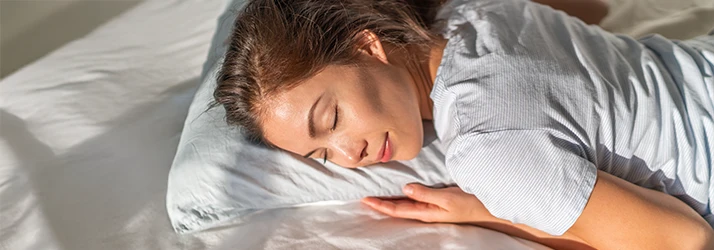Sleep Apnea Treatment

Most people chalk up fatigue to stress, poor habits, or just “getting older.” But if you constantly wake up tired, battle brain fog, or find yourself nodding off during the day, there may be a deeper cause—one that happens while you're asleep and slowly takes a toll on your body.
We’re talking about obstructive sleep apnea, a sleep disorder that can go undiagnosed for years. And while CPAP machines and oral appliances work for many, they’re not always enough. That’s where sleep apnea surgery in Ellensburg WA, Moses Lake WA, or Wenatchee WA steps in.
As oral surgeons at our multiple locations of Central Washington Oral & Facial Surgery, we don’t just look at symptoms—we analyze the structure of your airway, identify the physical roadblocks, and offer permanent solutions designed to help you breathe freely and sleep soundly.
What Is Sleep Apnea, Really?
At its core, obstructive sleep apnea (OSA) is a structural issue. The soft tissue at the back of your throat collapses or sags during sleep, cutting off airflow and interrupting breathing. These episodes can happen dozens or even hundreds of times a night—often without you remembering a thing.
The result? Poor sleep, low oxygen levels, and a host of downstream problems like:
- Daytime fatigue and irritability
- High blood pressure and heart strain
- Trouble concentrating or remembering things
- An increased risk of stroke, diabetes, and even depression
It’s not just about snoring—it’s about your health. And the longer it goes untreated, the more damage it can do.
When Surgery Becomes Part of the Solution
Let’s be clear: surgery isn’t always the first option. Non-invasive treatments like CPAP therapy, weight management, or oral appliances are often the starting point. But for some patients, these methods just aren’t enough—or aren’t well tolerated.
If your airway anatomy is contributing to the blockage, surgical correction may offer a long-term solution that devices simply can’t.
We typically consider surgery when:
- Conservative methods have failed or aren’t being tolerated
- Imaging shows physical obstructions (narrow airway, jaw position, excess tissue)
- Apnea symptoms remain moderate to severe despite treatment
- The goal is to reduce or eliminate dependence on external machines
Surgical Approaches Tailored to Your Airway
We don't believe in one-size-fits-all. Each patient’s airway is different, so we design a solution that’s as individual as your fingerprint. Here are some of the most effective procedures for treating sleep apnea surgically:
- Maxillomandibular Advancement (MMA)
This procedure repositions both jaws forward to enlarge the airway. It’s one of the most comprehensive surgical solutions for OSA and often leads to life-changing results in moderate to severe cases. - Soft Tissue Surgery (e.g., UPPP, tonsillectomy)
These procedures involve removing or reshaping excess soft tissue in the back of the throat to prevent airway collapse during sleep. This may include trimming the soft palate, uvula, or removing enlarged tonsils. - Genioglossus Advancement (GA)
The tongue plays a major role in airway blockage. GA repositions the tongue muscle attachment to prevent it from sliding back and blocking the throat while you sleep. - Nasal Airway Surgery
A deviated septum or enlarged turbinates in the nose can worsen airflow resistance. Corrective nasal procedures can help reduce pressure and improve breathing efficiency, especially in combination with other surgeries. - Airway Stimulator Implants
For some, a small device can be implanted to stimulate airway muscles while you sleep, keeping them open. It's a newer technology suited for specific cases and usually used when traditional surgeries aren’t ideal.
What to Expect Before and After Surgery
Every case begins with a full assessment, which may include imaging scans, sleep studies, and an evaluation of how your jaw, soft palate, and airway interact. Once a treatment path is chosen, we walk you through everything in detail—there are no surprises here.
Recovery varies by procedure but usually involves:
- A few days of downtime for minor surgeries, or 1–2 weeks for more involved procedures
- Temporary dietary adjustments (especially with jaw-related procedures)
- Swelling, mild soreness, and the usual post-op precautions
- Ongoing follow-ups to ensure healing and measure improvement
Most patients start noticing better breathing and more restorative sleep within a few weeks.
A Breath of Fresh Air—Literally
The impact of surgical sleep apnea treatment is hard to overstate. After years of fragmented sleep, patients often report:
- Waking up refreshed for the first time in years
- No longer needing naps to get through the day
- Sharper focus, improved mood, and clearer memory
- Reduced blood pressure and cardiovascular risk
- Better relationships (yes, even snoring can strain a marriage)
Rest is healing. When your body can finally get the oxygen and sleep it needs, everything gets better—from your brain to your heart to your outlook on life.
Ready to Explore a Surgical Option for Sleep Apnea?
If you’ve struggled with sleep apnea and haven’t found lasting relief, don’t settle for short-term fixes. There may be a structural issue that only a surgical approach can resolve—and we’re here in Ellensburg WA, Moses Lake WA, and Wenatchee WA to help you explore it.
We’ll evaluate your airway, review your sleep studies, and create a personalized plan to restore your breathing and improve your quality of life, without guesswork or generic advice.
Because when you breathe better, you live better.
Ellensburg WA
Moses Lake WA
Wenatchee WA
Yakima WA



